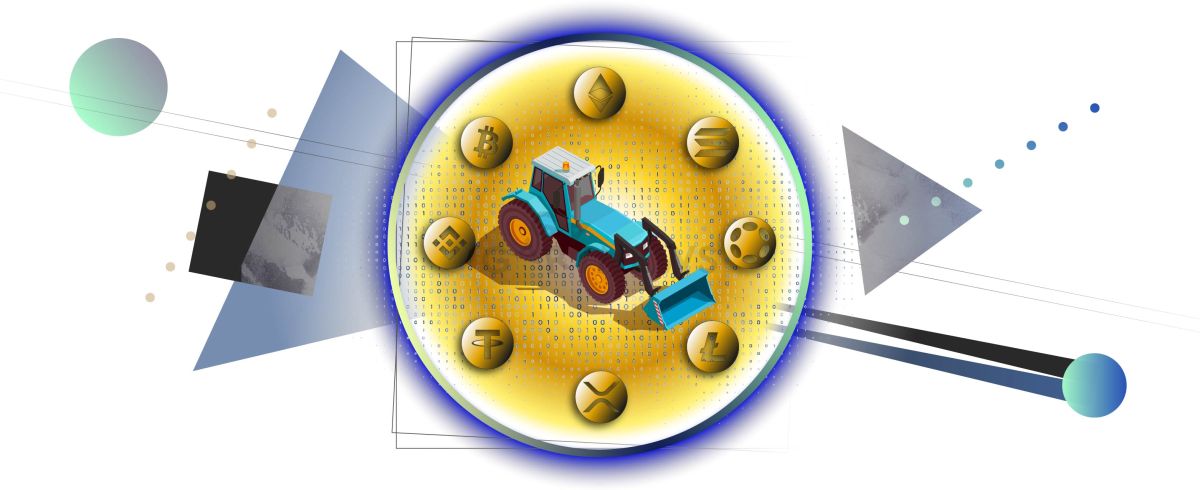What is farming in the DeFi ecosystem?

Is it possible to “plant” a cryptocurrency and grow a “harvest” in the form of additional crypto? It sounds crazy but nevertheless such a way to generate digital income as Yield Farming (profitable farming) is becoming more popular every day. There are “seeds”, “soil” and other attributes of real farming here.
On this page
What is farming in the DeFi ecosystem?
Yield Farming (profitable farming) is a strategy for temporarily transferring a user’s cryptocurrency to a liquidity pool of a DeFi protocol in order to receive a part of the pool’s profits.
If you compare Yield Farming with real farming, then the harvest is your profit, the seeds are your crypto assets and the soil is your chosen protocol or smart contract.
Profitable farming is a very profitable business. The estimated returns of some popular income farm pools can range from 1.15% to over 1000% per annum.
How to do Yield Farming?
There are a number of the most common DeFi protocol participation models that can be attributed to Yield Farming.
One of the most important tasks of profitable farming is sufficient liquidity. While in the traditional financial system reserve funds, brokers and custodial institutions solve the liquidity problem, so in decentralized finance the task of providing liquidity lies with the community.
In order for the community to more actively allocate their liquidation to pools, DeFi protocols reward them with tokens and a percentage of fees.
Liquidity and Liquidity Mining programs
For example, to start trading WBT/wUSDT in a pool, both coins must be submitted in proportion to their market price. If the price for WBT is almost $4, you need to add 100 WBT and 400 wUSDT to the pool. In addition, if users make WBT/wUSDT transactions, the percentage of transaction fee will be shared between the liquidity providers in proportion to their share in the pool.
The user will also receive a certain amount of special LP tokens, which the platform rewards for participation in the pool. These tokens can be used as deposits in other programs.
With regard to liquidity mining, the idea is that liquidity providers are rewarded not only with part of the protocol fee, but also with its internal tokens. Such programs are most often used by developers to increase the liquidity of their tokens on decentralized exchanges (DEX).
Lending protocols
Decentralized lending protocols allow users to provide assets for loans or to borrow at an annual interest rate in profitable farming. Users who provide liquidity to these protocols “lend” their assets to borrowers and receive their interest from the platform’s income.
Some protocols provide additional rewards in the form of internal tokens. These tokens can be used to manage the protocol through voting, to sell on exchange or to use in other options of profitable farming.
Staking programs
Staking is the easiest way to generate income from profitable farming as only one type of crypto is required. Check GNcrypto for more information about staking.
Staking allows to avoid the risk of intermittent losses that is one of the main problems of DeFi.
Yield Farming Risks
Yield Farming is growing in popularity every year. More and more users are participating in profitable farming and the amount of blocked farm assets exceeds hundreds of millions of US dollars. But before you embark on “earthwork”, it is worth remembering that despite the advantages and prospects offered by Yield Farming, you will have to be prepared for risks.
The content on The Coinomist is for informational purposes only and should not be interpreted as financial advice. While we strive to provide accurate and up-to-date information, we do not guarantee the accuracy, completeness, or reliability of any content. Neither we accept liability for any errors or omissions in the information provided or for any financial losses incurred as a result of relying on this information. Actions based on this content are at your own risk. Always do your own research and consult a professional. See our Terms, Privacy Policy, and Disclaimers for more details.

























